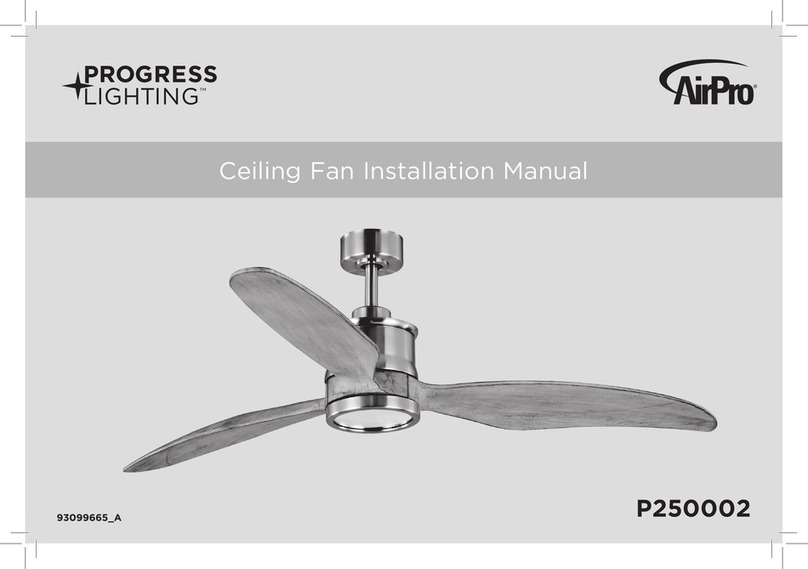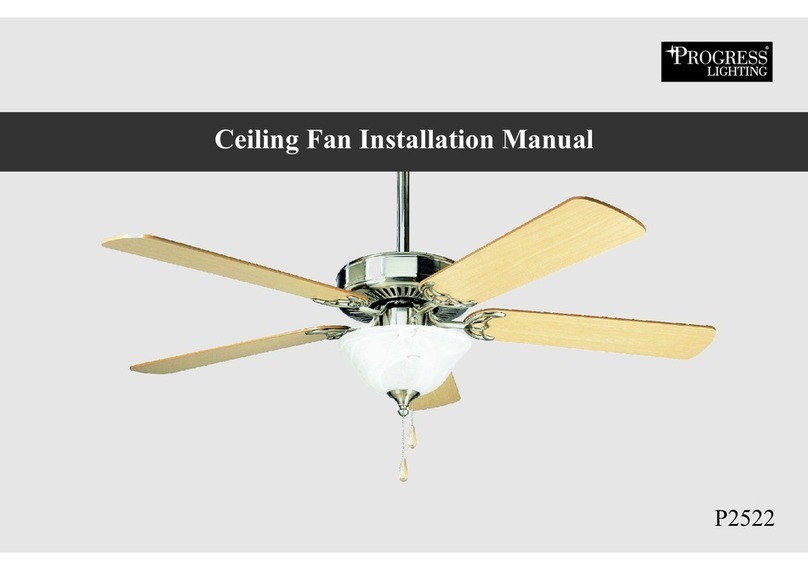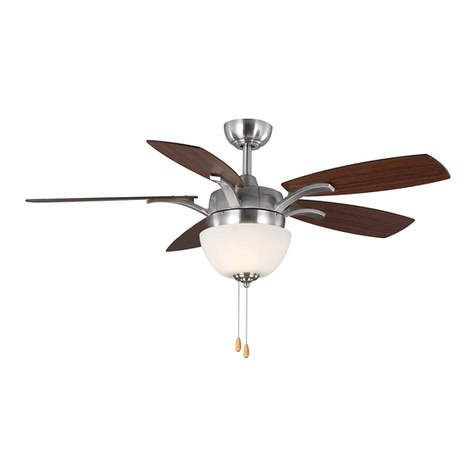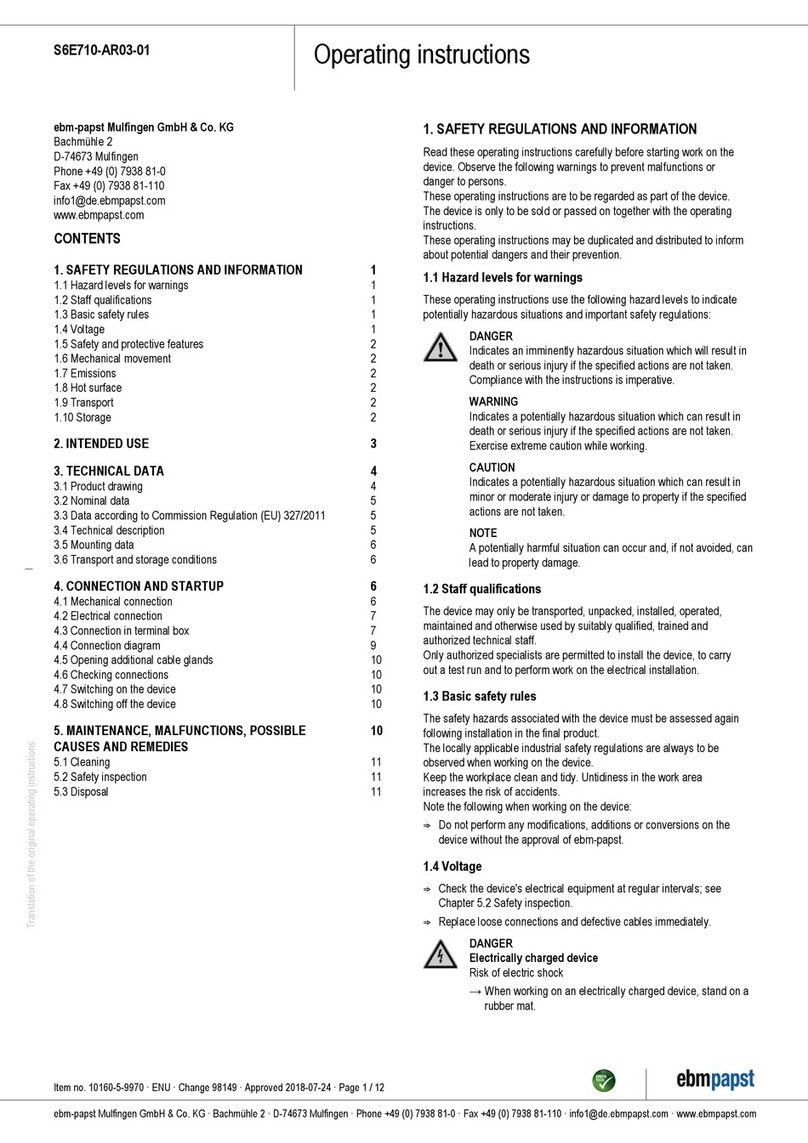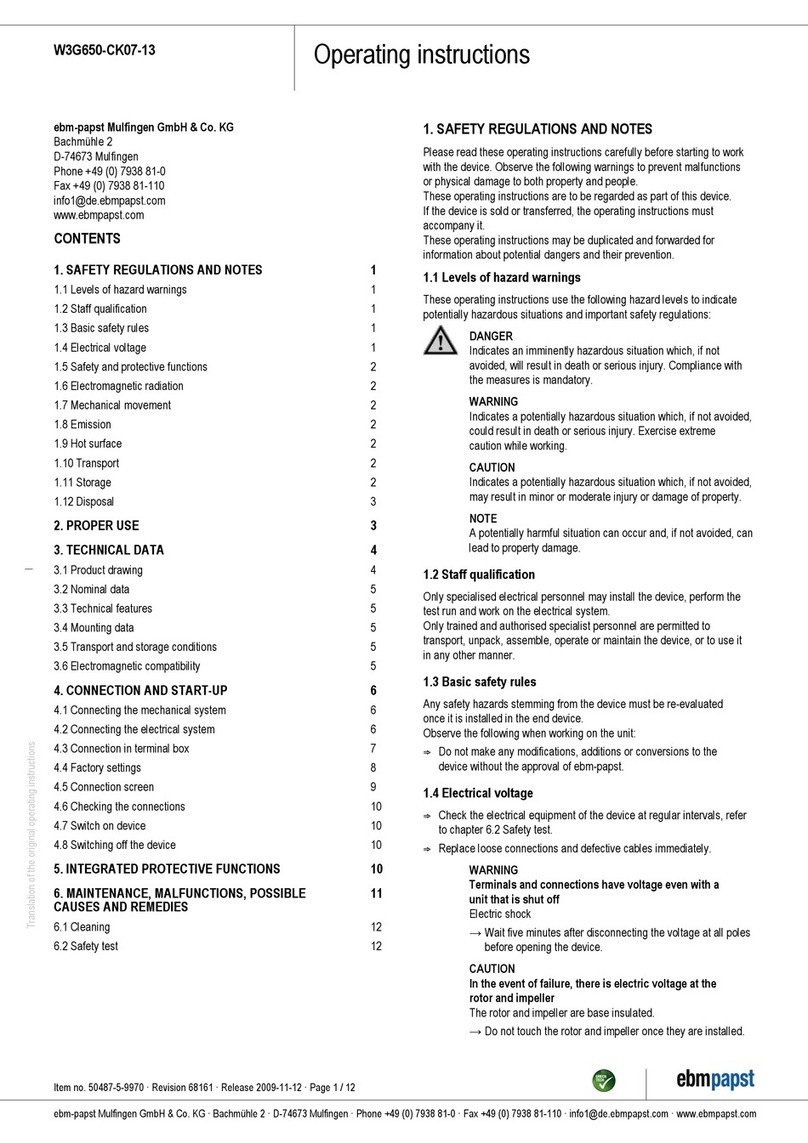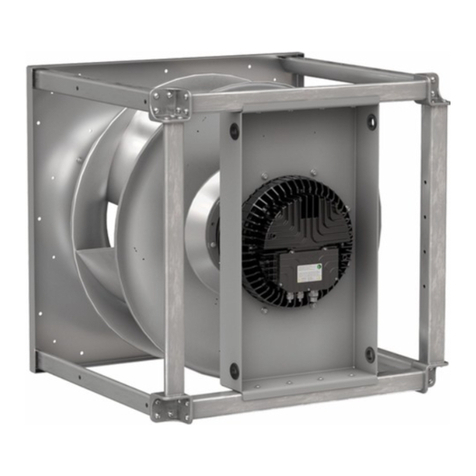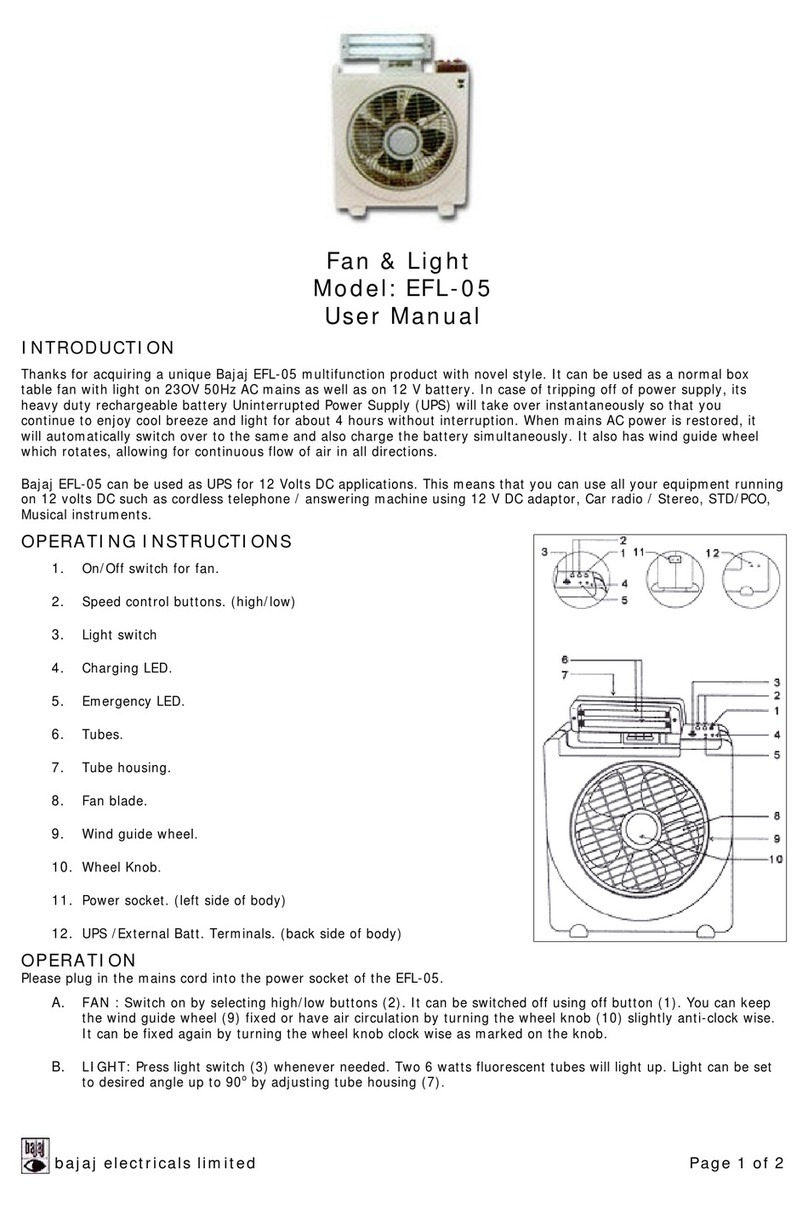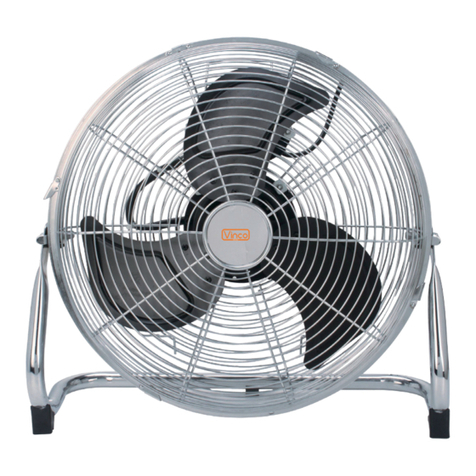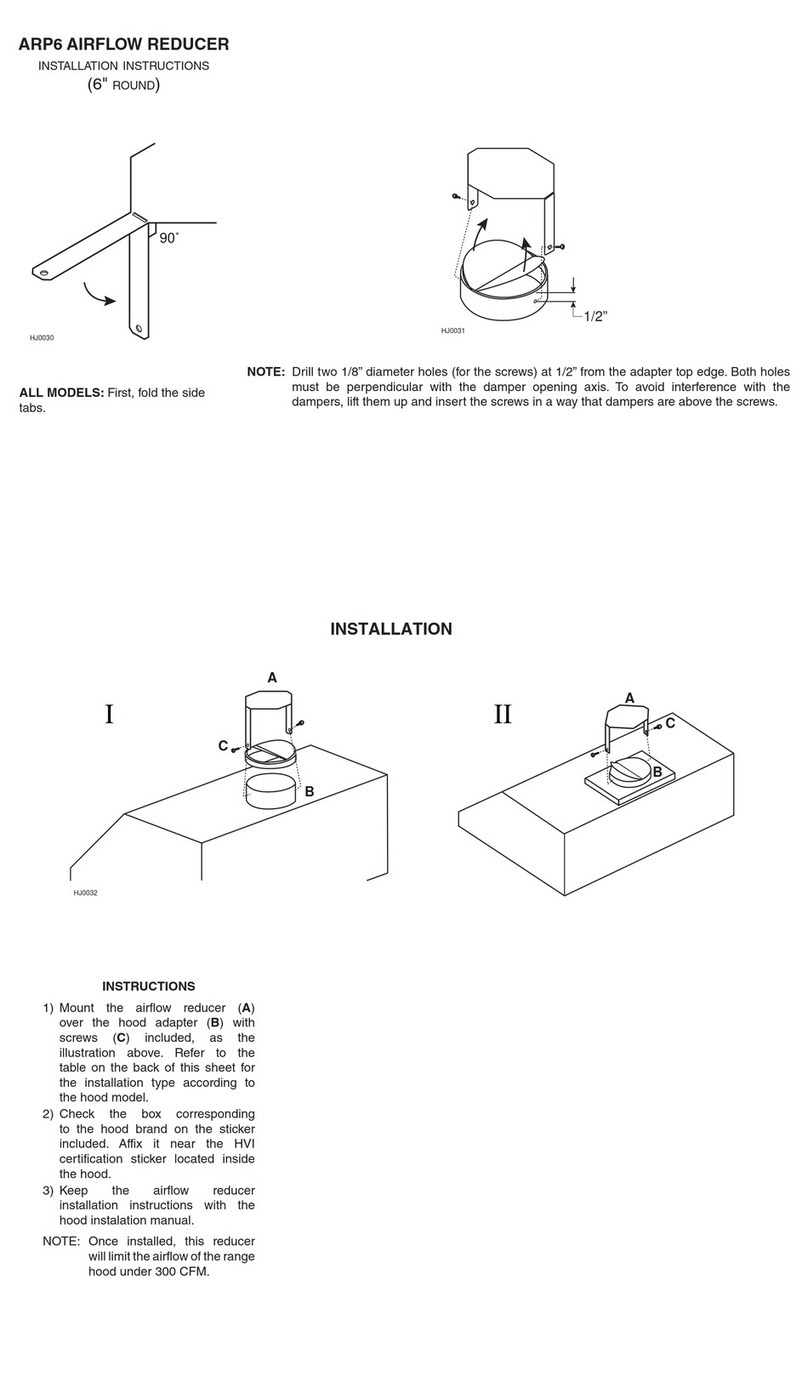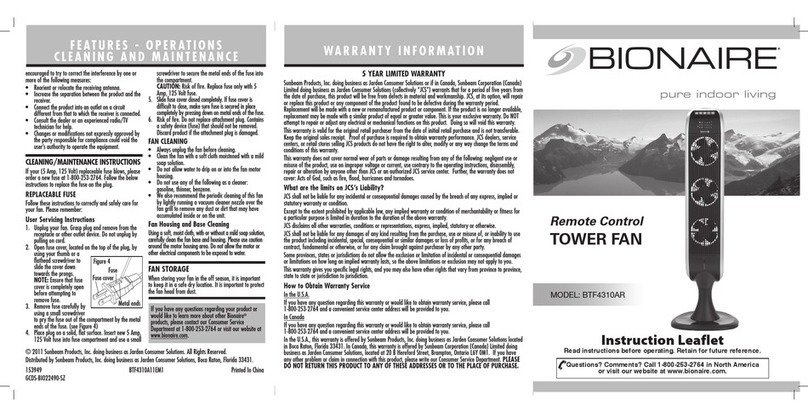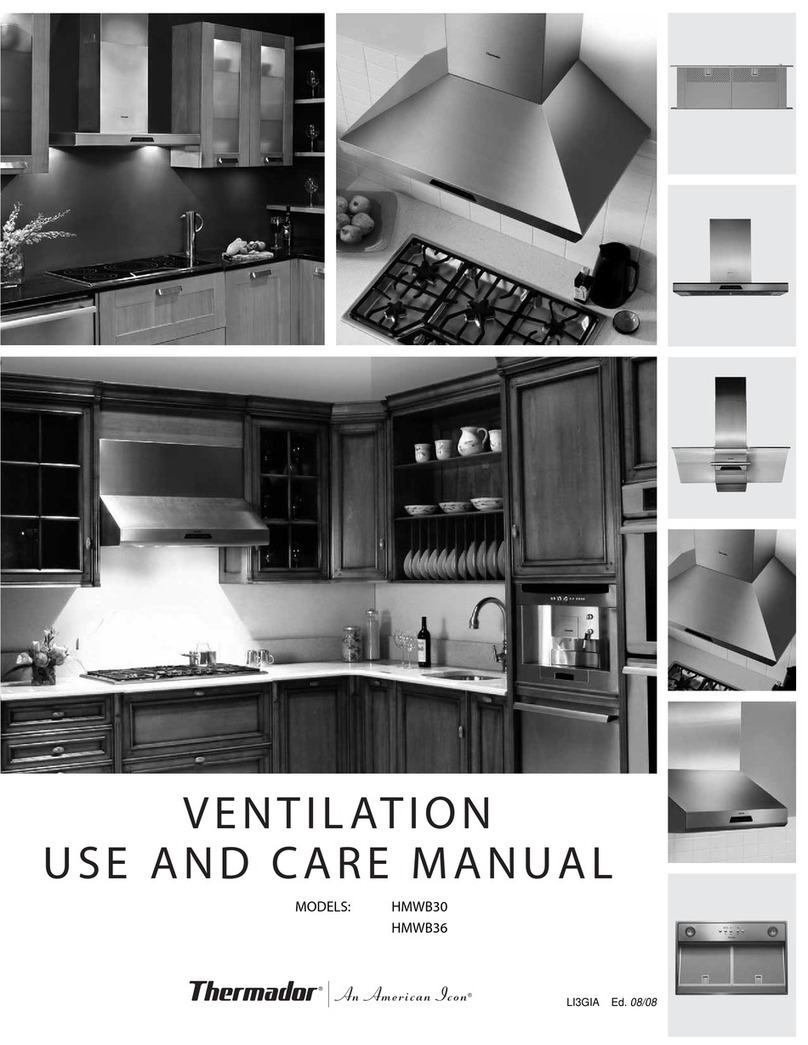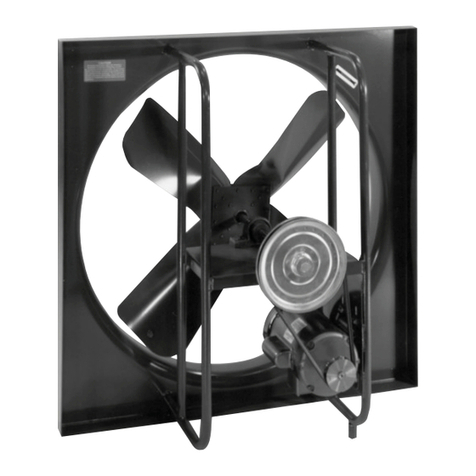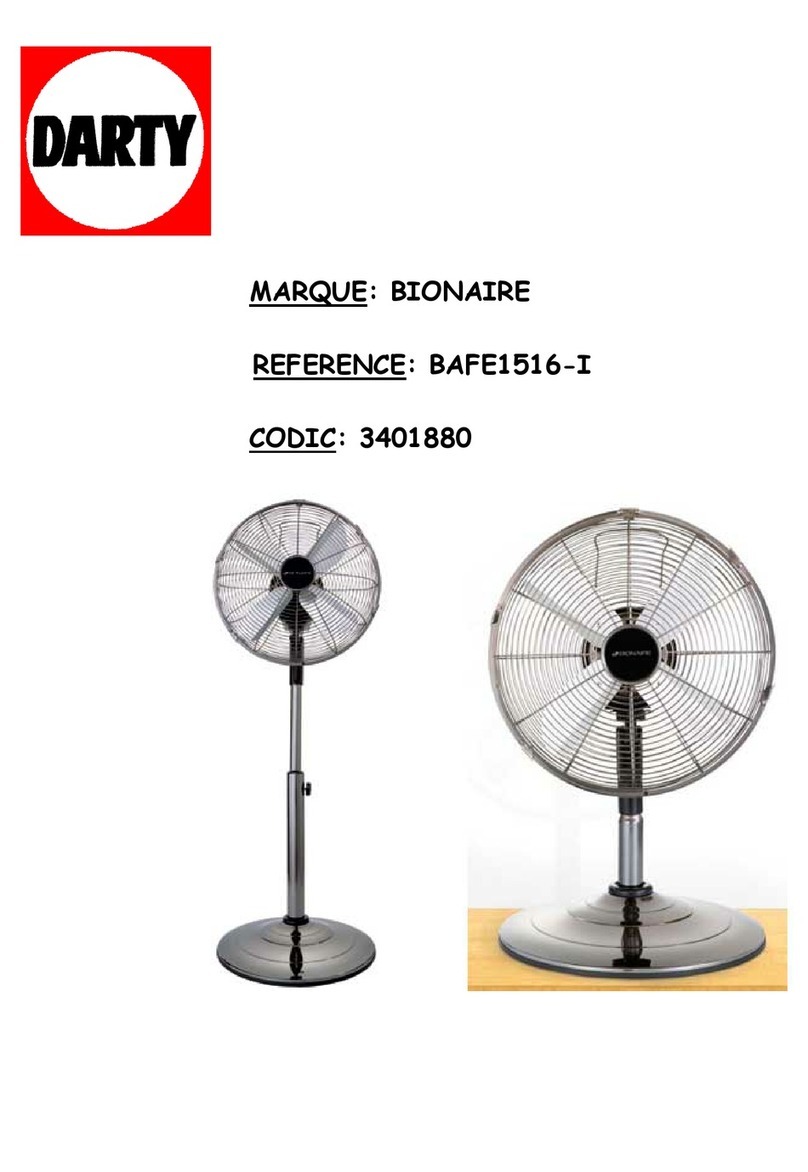PROGRESS LIGHTNING AirPro P2526 User manual


Date Purchased Store PurchasedModel No.Serial No. Vendor No.UPC11221785247139217PROGRESS LIGHTING 15-Year Limited WarrantyPROGRESS LIGHTING FAN MOTORS ARE WARRANTED TO THE END USER TO BE FREE OF ELECTRICAL AND/OR MECHANICAL DEFECTS FOR A PERIOD OF 15 YEARS FROM DATE OF SALE. PULL CHAIN SWITCHES, REVERSE SWITCHES, CAPACITORS AND METAL FINISHES ARE WARRANTED FOR A PERIOD OF 1 YEAR. WARPING OF WOODEN OR PLASTIC BLADES IS NOT COVERED BY THIS WARRANTY.THE END USER HAS THE OPTION OF RETURNING THE DEFECTIVE FAN TO THE PLACE OF PURCHASE DURING THE FIRST 30 DAYS FOR A REPLACEMENT. AFTER 30 DAYS, THE PURCHASER MUST CONTACT PROGRESS LIGHTING FOR REPAIR OR REPLACEMENT. THE END USER ALSO BEARS THE RESPONSIBILITY FOR ALL COSTS IN THE REMOVAL, SHIPPING AND REINSTALLATION OF FANS OR PARTS FOR REPAIR OR REPLACEMENT.PROGRESS LIGHTING WILL NOT ASSUME LIABILITY OR RESPONSIBILITY FOR DAMAGES (INCLUDING INCIDENTAL OR CONSEQUENTIAL) CAUSED BY THE IMPROPER INSTALLATION OR OPERATION OF THE UNIT OR ITS COMPONENT PARTS, OR BY THE FAILURE OF SUPPORTING HARDWARE NOT SUPPLIED BY PROGRESS LIGHTING. THIS WARRANTY IS GIVEN IN LIEU OF ALL OTHER GUARANTEES, WHETHER EXPRESSED OR IMPLIED, AND IS VOIDED IN CASES OF ABUSE, MISUSE OR IMPROPER HANDLING, NEGLIGENCE, SHIPPING DAMAGE, UNAUTHORIZED REPAIRS (MADE OR ATTEMPTED) OR UNUSUAL APPLICATION.SOME STATES DO NOT ALLOW LIMITATIONS ON HOW LONG AN IMPLIED WARRANTY LASTS OR THE EXCLUSION OR LIMITATIONS OF INCIDENTAL OR CONSEQUENTIAL DAMAGES, SO THE ABOVE LIMITATIONS AND EXCLUSIONS MAY NOT APPLY TO YOU. THIS WARRANTY GIVES YOU SPECIFIC RIGHTS AND YOU MAY HAVE OTHER RIGHTS WHICH VARY FROM STATE TO STATE.15-Year Limited Warranty

Safety Rules.....................................................................................................................................Unpacking Your Fan ........................................................................................................................Installing Your Fan ...................................................................................................................................................................................................................................................Care of Your Fan ............................................................................................................................Troubleshooting ............................................................................................................................Specifications ...............................................................................................................................Operating Your Fan 1.2.3.10.11.12.13.Table of Contents

1. To reduce the risk of electric shock, insure electricity has been turned off at the circuit breaker or fuse box before beginning.2. All wiring must be in accordance with the National Electrical Code and local electrical codes. Electrical installation should be performed by a qualified licensed electrician.3. WARNING: To reduce the risk of electrical shock and fire, do not use this fan with any solid-state fan speed control device.4. WARNING: To reduce the risk of personal injury, use only the two steel screws (and lock washers) provided with the outlet box for mounting to the outlet box. Most outlet boxes commonly used for the support of lighting fixtures are not acceptable for fan support and may need to be replaced, consult a qualified electrician if in doubt.9. Avoid placing objects in the path of the blades.10. To avoid personal injury or damage to the fan and other items, be cautious when working around or cleaning the fan.11. Do not use water or detergents when cleaning the fan or fan blades. A dry dust cloth or lightly dampened cloth will be suitable for most cleaning.12. After marking electrical connections, spliced conductors should be turned upward and pushed carefully up into outlet box. The wires should be spread apart with the grounded conductor and the equipment-grounding conductor on one side of the outlet box.13. Electrical diagrams are reference only. Light kit that are not packed with the fan must be UL Listed and marked suitable for use with the model fan you are installing. Switches must be UL General Use Switches. Refer to the Instructions packaged with the light kits and switches for proper assembly.WARNINGTO REDUCE THE RISK OF FIRE, ELECTRIC SHOCK OR PERSONAL INJURY, MOUNT FAN TO OUTLET BOX MARKED ACCEPTABLE FOR FAN SUPPORT.5. capable of reliably supporting a minimum of 50 pounds. Use only UL Listed outlet boxes marked FOR FAN SUPPORT.6. The fan must be mounted with a minimum of 7 feet clearance from the trailing edge of the blades to the floor.7. WARNING: Use only with light kit marked "Suitable for Use in Damp Locations" .8. Do not operate reversing switch while fan blades are in motion. Fan must be turned off and blades stopped before reversing blade direction.The outlet box and support structure must be securely mounted and WARNINGTO REDUCE THE RISK OF PERSONAL INJURY, DO NOT BEND THE BLADE BRACKETS (ALSO REFERRED TO AS FLANGES) DURING ASSEMBLY OR AFTER INSTALLATION. DO NOT INSERT OBJECTS IN THE PATH OF THE BLADES.WARNING THIS PRODUCT CONTAINS CHEMICALS KNOWN TO THE STATE OF CALIFORNIA TO CAUSE CANCER, BIRTH DEFECTS AND /OR OTHER REPRODUCTIVE HARM. THOROUGHLY WASH HANDS AFTER INSTALLING, HANDLING, CLEANING, OR OTHERWISE TOUCHING THIS PRODUCT.NOTEREAD AND SAVE ALL INSTRUCTIONS!1. Safety Rules

Unpack your fan and check the contents. You should have the following items:1. 2. Mounting plate (located inside canopy)3. Canopy assembly4. Ball/downrod assembly with safety cable5. Coupling cover Set of blades (5)6. Fan motor assembly7. Set of blades bracket (5)8. Mounting plate9. Switch housing10. Balancing kitIMPORTANTPLEASE REMOVE RUBBER MOTOR SUPPORT PLATE ON THE BOTTOM OF THE FAN BEFORE INSTALLING BLADES OR TESTING MOTORabc3126879101145dUnpacking Your Fan 2.11. Loose parts bag containing:a. Blade attachment hardware (16 screws, 16 rubber washers)b. Blade bracket attachment hardware (1 screws with lock washers)c. Mounting hardware (3 screws, 1 plastic gasket, 1 metal gasket)d. Electrical hardware (3 plastic wire connectors, 1 Pull chain)

3. Installing Your Fan Tools RequiredPhillips screw driver, straight slot screw driver, adjustable wrench, step ladder, and wire cutters.Mounting OptionsIf there isn't an existing UL listed mounting box, then read the following instructions. Disconnect the power by removing fuses or turning off circuit breakers.Secure the outlet box directly to the building structure. Use appropriate fasteners and building materials. The outlet box and its support must be able to fully support the moving weight of the fan (at least 50 lbs). Do not use plastic outlet Note: You may need a longer downrod to maintain proper blade clearance when installing on a steep, sloped ceiling.To hang your fan where there is an existing fixture but no ceiling joist, you may need an installation hanger bar as shown in Figure 4 (available at your Progress Lighting Outlet boxOutlet box
Outlet box
Figure 1Figure 2 Figure 4 Figures 1,2 and 3 are examples of different ways to mount the outlet box.WARNINGTO REDUCE THE RISK OF FIRE, ELECTRIC SHOCK, OR OTHER PERSONAL INJURY, MOUNT FAN ONLY TO AN OUTLET BOX MARKED ACCEPTABLE FOR FAN SUPPORT AND USE THE MOUNTING SCREWS PROVIDED WITH THE OUTLET BOX. OUTLET BOXES COMMONLY USED FOR THE SUPPORT OF LIGHTING FIXTURES MAY NOT BE ACCEPTABLE FOR FAN SUPPORT AND MAY NEED TO BE REPLACED. CONSULT A QUALIFIED ELECTRICIAN IF IN DOUBT.Figure 3Angled ceilingmaximum45 angleProvide strongsupportRecessedoutlet box
Ceiling MountingPlate

Hanging the FanREMEMBER to turn off the power.Follow the steps below to hang your fan properly.NOTE: This ceiling fan is supplied with two types of hanging assemblies; the standard ceiling installation using the ball/ downrod assembly mounting, and the "close-to-ceiling" mounting. The "close-to-ceiling" mounting is recommended in rooms with less than 8-foot ceilings or in areas where additional space is desired from the floor to the fan blades. When using standard downrod installation, the distance from the ceiling to the bottom of the fan blades will be approximately 14.5 inches. The "close-to-ceiling" installation reduces the distance from the ceiling to the bottom of the fan blades to approximately 9 inches.Standard ceiling mountingNote: For mounting angles between 20-45 degrees, remove the canopy bottom cover installed on the bottom of the canopy.1. Remove the canopy ring from the canopy. (Figure 5). 4. 2. Remove the mounting plate from the canopy by loosening the four screws on the top of the canopy. Remove the two non-slotted screws and loosen the slotted screws. This will enable you to remove the mounting plate (Figure 6).3. 4. Route the wires exiting the top of the fan motor through the decorative motor collar cover then the canopy ring. Make sure the slot openings are on top. Route the wires through the canopy and then through the ball/downrod assembly (Figure 7). 5. Loosen, but do not remove, the set screws on the collar on the top of the motor housing.Remove the bolt, lock pin and loosen set screws from the top of the motor assembly.6. Align the holes at the bottom of the downrod with holes in the collar on top of the motor housing (Figure 7). Carefully insert the hanger pin through the holes in the collar and downrod. Be careful not to jam the pin against the wiring inside the downrod. Insert the locking pin through the hole near the end of the hanger pin until it snaps into its locked position as noted in the circle inset of Figure 7.7. Re-tighten the set screws on the collar on the top of the motor housing.Figure 5Figure 6Hanger pinCanopy ringBall/downrodassemblyMotor wiresPin inlockedpositionMotor collarLocking pinTighten screwsfirmlyCollar coverCeilingcanopyFigure 7Loosen but do not removeRemoveWARNINGFAILURE TO PROPERLY INSTALLLOCKING PIN AS NOTED IN STEP 6 COULD RESULT IN FAN LOOSENING AND POSSIBLY FALLING.Canopy ring

5. Figure 9Figure 10Motor collarClose-to-Ceiling Mounting1. Remove the canopy ring from the canopy. (Figure 5)2. Remove the mounting plate from the canopy by loosening the four screws on the top of the canopy. Remove the two non-slotted screws and loosen the slotted screws. This will enable you to remove the mounting plate (Figure 7).3. Remove the decorative canopy bottom cover from the canopy by depressing the three studs (Figure 8).4. Remove the bolt, lock pin and set screws from the top of the motor assembly.CeilingCanopyPlasticgasketMetalgasketScrew withlock washerCanopyringFigure 8Canopy bottomcover5. washers (every other one) securing the motor collar to the top of the fan motor housing. (Figure 9).Remove three of six screws and lock 6. Route the wires exiting the top of the fan motor through the plastic gasket, canopy ring, canopy and the metal gasket, place the plastic gasket over the remaining three screws, place the canopy ring, canopy and the metal gasket over the motor collar at the top of the fan motor (Figure 10).7. Align the three mounting screw holes on the metal gasket with the holes on the motor collar at the top of the fan motor and fasten, using the three screws and lock washers provided with metal gasket.8. Tighten the three mounting screws securely.Screw withlock washer(3 of 6 places)

6.Figure 12Figure 13Figure 13-1Close- to-Ceiling MountingStandard MountingInstalling Fan to the Electrical BoxThe outlet box and support structure must be securely mounted and capable of reliably supporting a minimum of 50 pounds. use only cul listed outlet boxes marked"Acceptable for Fan Support of 22.7 kgs (50 lbs) or less".1. Pass the 120-volt supply wires through the center hole in the ceiling mounting plate as shown in Figure 11.2. Install the ceiling mounting plate on the electrical box by mounting screws provided with the outlet box. When using close-to-ceiling mounting, it is important that the mounting plate be level. If necessary, use leveling washers (not supplied) between the mounting plate and electrical box. Note that the flat side of the mounting plate is toward the electrical box (Figure 11).3. Securely tighten the two mounting screws.4. For additional security, install the wood screws with flat washers (not included) through outer slots in mounting plate and into wooden joist. Note: Leave one wood screw untightened to attach safety cable from motor (Figure 12).5. Carefully lift the fan assembly up to the ceiling mounting plate and hang the fan on the hook under the following two ways: for Close-to-Ceiling Mounting; utilizing one of the holes at the outer rim of the ceiling canopy (Figure 13), for Standard Mounting; place the looped end of the safety cable out of hanging ball around the hook on the ceiling mounting plate. (Figure 13-1)Outlet boxCeilingFigure 11Mountingscrews(supplied withelectrical box)Ceiling mountingplateCUL Listedelectricalbox120V WiresWashersWood joistWARNING THE HOOK AS SHOWN IN FIG. 13 IS ONLY TO BALANCE FAN WHILE CONNECTINGWIRING. FAILURE TO HANG AS SHOWN IN FIG. 13 MAY RESULT IN HOOK BREAKING CAUSING THE FAN TO FALL. HOOK MUST PASS FROM INSIDE TO OUTSIDE OF CANOPY.THE ILLUSTRATION SHOWN IN FIGURE 13-1 IS ONLY TO PROVIDE A MEANS TO BALANCE THE FAN WHILE ATTACHING WIRING. FAILURE TO COMPLETE INSTALLATION ACCORDING TO THIS MANUAL WILL RESULT IN DAMAGE TO PROPERTY AND PERSONAL INJURY.

7.SUPPLY CIRCUITGroundConductorOutlet Box GreenGroundLeadGround toDownrod
BLACKWHITEWHITEBLACKBLUEGREEN
WHITEBLUEBLACKWHITEFigure 14Diagram indicates optional light kit wiring.WARNINGELECTRICAL DIAGRAMS ARE FOR REFERENCE ONLY. OPTIONAL USE OF ANY LIGHT KIT SHALL BE CUL LISTED AND MARKED SUITABLE FOR USE WITH THIS FAN.Making the Electrical ConnectionsFollow the steps below to connect the fan to your household wiring. Use the wire connecting nuts supplied with your fan. Secure the connectors with electrical tape. Make sure there are no loose strands or connections.Step 1 Connect the fan supply (black) wire and light supply (blue) wire to the black household supply wire as shown in Figure 14.Step 2. Connect the neutral fan (white) wire to the white neutral household wire.Step 4 After connecting the wires, spread them apart so that the green and white wires are on one side of the outlet box and the black wire is on the other side.REMEMBER to disconnect the power. If you feel that you do not have enough electrical wiring knowledge or experience, have your fan installed by a licensed electrician.Step 3 Connect the two green fan ground wires, located on the hanging ball and mounting plate, to the household ground wire. When using Close-to-Ceiling mounting, there is only one green ground lead from the ceiling mounting plate since the ball/downrod assembly is not used.WARNINGTO REDUCE THE RISK OF FIRE OR ELECTRIC SHOCK, DO NOT USE A WALL MOUNTED SOLID STATE SPEED CONTROL WITH THIS FAN. IT WILL PERMANENTLY DAMAGE THE ELECTRONIC CIRCUITRY.Step 5 Turn the connecting nuts upward and push the wiring into the outlet box.

8.RubberwasherBladearmFigure 15BladeScrewsAttaching the Fan BladesStep 1 Attach the blades to the blade arms using three screws and rubber washers as shown in Figure 15. Start a screw into the arm, do not tighten. Repeat for the 2 remaining screws and washers.Step 2 Tighten each screw securely starting with the center screw. Make sure the blade is straight.Step 3 (Figure 16)Step 4 Install an optional light kit if you wish. Follow the instructions included with the kit.NOTE: Your fan blades are reversible. Select the blade side finish which best accentuates your decor.Fasten the blade assembly to the motor using the motor screws provided.Figure 16MotorBlade arm
'
Finishing the Installation1. Carefully unhook the fan from the mounting plate, for Standard Mounting; you can keep the cable around the hook and seat the hanger ball in canopy, make sure the tab in the ring at the bottom of the canopy is properly seated in the groove in the hanger ball. Align the locking slots of the ceiling canopy with the two screws in the mounting plate. Push up to engage the slots and turn clockwise to lock in place. Immediately tighten the two mounting screws firmly.2. Install the remaining two mounting screws into the holes in the canopy and tighten firmly. 3. Install the decorative canopy ring by aligning the ring's slots with the screws in the canopy. Rotate the ring counter-clockwise to lock in place.4. You may now proceed to attaching the fan blades.WARNINGLOCKING SLOTS OF CEILING CANOPY ARE PROVIDED ONLY AS AN AID TO MOUNTING. DO NOT LEAVE FAN ASSEMBLY UNATTENDED UNTIL ALL FOUR CANOPY SCREWS ARE ENGAGED AND FIRMLY TIGHTENED.
'

Installing the Mounting PlateStep 1. Remove 1 of the 3 screws from the mounting ring and loosen the other 2 screws. (Do not remove)Step 2. Place the key holes on the mounting plate over the 2 screws previously loosened from the mounting ring, turn mounting plate until it locks in place at the narrow section of the key holes. Secure by tightening the 2 screws previously loosened and the one previously removed. (Fig. 17)Installing the Switch HousingNOTE: Before starting installation, disconnect the power by turning off the circuit breaker or removing the fuse at fuse box. Turning power off using the fan switch is not sufficient to prevent electric shock.1. Remove the screws from the mounting plate under the fan motor.2. While holding the switch housing under your fan, snap together the wire connection plug. (Fig. 18)3. Raise the switch housing to the mounting plate until the holes in switch housing and mounting plate line up. Reinsert screws to secure in place. (Fig. 18)
Mounting plateMounting ringScrews
SwitchhousingConnection plugMounting ringScrews
Figure 17Figure 18
9.

Operating Your Fan 10.
TouchingceilingFigure 19WARNINGTO REDUCE THE RISK OF PERSONAL INJURY, DO NOT BEND THE BLADE HOLDERSWHILE INSTALLING, BALANCING THEBLADES, OR CLEANING THE FAN. DO NOTINSERT FOREIGN OBJECTS BETWEEN ROTATING FAN BLADES.Turn on the power and check the operation of your fan. There are two pull chains available in your fan:1. 3-speed pull chain- it controls the fan speed as follows: 1 pull- High, 2 pulls- Medium, 3 pulls- Low, and 4 pulls- Off. Speed settings for warm or cool weather depend on factors such as the room size, ceiling height, number of fans, and so on.The slide switch controls directions: forward (switch left) or reverse (switch right). Warm weather - (Forward) A downward air flow creates a cooling effect as shown in Figure 20. This allows you to set your air conditioner on a higher setting without affecting your comfort.Cool weather - (Reverse) An upward airflow moves warm air off the ceiling area as shown in Figure 21. This allows you to set your heating unit on a lower setting without affecting your comfort.NOTEWAIT FOR FAN TO STOP BEFORECHANGING THE SETTING OF THE SLIDE SWITCH.Blade blancingAll blades are grouped by weight. Because natural woods very in density, the fan may wobble even though the blades are weighed equally.The following procedure should correct most fan wobbling problems. Check after each step.1. Check that all blade and blade arm screws are secure.2. Most fan wobbling problems are caused when blade levels are unequal. Check this level by selecting a point on the ceiling above the tip of one of the blades. Measure this distance as shown in Figure 19. Rotate the fan until the next blade is positioned for measurement. Repeat for each blade. The distance deviation should be equal within 1/8".3. Use the enclosed Blade Balancing Kit if the blade wobble is still noticeable.4. If the blade wobble is still noticeable, interchanging two adjacent (side by side) blades can redistribute the weight and possibly result in smoother operation.

Here are some suggestions to help you maintain your fan1.Because of the fan's natural movement, some connections may become loose. Check the support connections, brackets, and blade attachments twice a year. Make sure they are secure. (It is not necessary to remove fan from ceiling.)2. Clean your fan periodically to help maintain its new appearance over the years. Use only a soft brush or lint-free cloth to avoid scratching the finish. The plating is sealed with a lacquer to minimize discoloration or tarnishing. Do not use water when cleaning. This could damage the motor, or the wood, or possibly cause an electrical shock.3. You can apply a light coat of furniture polish to the wood blades for additional protection and enhanced beauty. Cover small scratches with a light application of shoe polish.4. There is no need to oil your fan. The motor has permanently lubricated bearings.IMPORTANTMAKE SURE THE POWER IS OFF AT THE ELECTRICAL PANEL BOX BEFORE YOU ATTEMPT ANY REPAIRS. REFER TO THE SECTION "MAKING ELECTRICAL CONNECTIONS"11. Care of Your Fan Figure 20Figure 21

ProblemFan will not start.Fan sounds noisy.Solution1.Check circuit fuses or breakers.2. Check line wire connections to the fan and switch wire connections in the switch housing. CAUTION: Make sure main power is off.1. Make sure all motor housing screws are snug.2. Make sure the screws that attach the fan blade bracket to the motor hub is tight.3. Make sure wire nut connections are not rubbing against each other or the interior wall of the switch housing. CAUTION: Make sure main power is off.4. Allow a 24-hour "breaking-in" period. Most noise associated with a new fan disappear during this time.5. If using an optional light kit, make sure the screws securing the glassware are tight. Check that light bulb is also secure.6.Some fan motors are sensitive to signals from solid-state variable speed controls. If you have installed this type of control, choose and install another type of control.7. Make sure the upper canopy is a short distance from the ceiling. It should not touch the ceiling.Troubleshooting 12.

These are approximate measures. They do not include Amps and Wattage used by the light kit.RPMCFMN.W.G.W.
C.F.
52"
1202.37'11.64kgs13.2kgs0.280.430.5917387064118170151027664150120120Fan Size Speed Volts Amps WattsLow MediumHigh 13. Specifications 2007 Progress Lighting, Inc.701 Millennium BlvdGreenville, SC 29607 All Rights ReservedC


Fecha de compra
Lugar de compra
N de modelo.
N de serie
Numero de vendedor
UPC
11221
785247139217
Garantía Limitada de 15 Años
LOS VENTILADORES PROGRESS LIGHTING GARANTIZAN AL CONSUMIDOR ESTAR
LIBRES DE DEFECTOS ELÉCTRICOS Y/O MECÁNICOS PRO UN PERÍODO DE 15 AÑOS A
PARTIR DE LA FECHA DE VENTA. LOS INTERRUPTORES CON CADENA, LOS
INTERRUPTORES DE INVERSIÓN. LOS CONDENSADORES Y LAS TERMINACIONES
METÁLICAS ESTÁN GARANTIZADAS POR UN PERÍODO DE 1 AÑO. LAS PALETAS
PANDEADAS DE MADERA O PLÁSTICO NO ESTÁN CUBIERTAS POR ESTA GARANTÍA.
EL CONSUMIDOR TIENE LA OPCIÓN DE DEVOLVER EL VENTILADOR DEFECTUOSO
PARA SU CAMBIO AL NEGOCIO DE ADQUISICIÓN DURANTE LOS 30 DÍAS
SIGUIENTES. DESPUÉS DE 30 DÍAS, EL COMPRADOR DEBE CONTACTAR PROGRESS
LIGHTING PARA LA REPARACIÓN O REEMPLAZO. EL CONSUMIDOR SE HARÁ CARGO
DE TODOS LOS COSTOS DE TRANSPORTE, EXPEDICIÓN Y REINSTALACIÓN DE LOS
VENTILADORES O DE LAS PARTES PARA REPARAR O REEEMPLAZAR.
PROGRESS LIGHTING NO ASUMIRÁ OBLIGACIONES O RESPONSABILIDAD POR
DAÑOS (INCLUYENDO INCIDENTALES O CONSIGUIENTES) CAUSADOS POR EL USO O
LA INSTALACIÓN IMPROPIA DE LA UNIDAD O DE SUS PARTES COMPONENTES, O POR
LA FALLA DEL EQUIPO DE SOPORTE NO SUMINISTARADO POR PROGRESS LIGHTING
ESTA GARANTÍA ESTÁ DADA EN LUGAR DE TODAS LAS OTRAS GARANTÍAS, SEAN
ÉSTAS EXPRESAS O IMPLÍCITAS, Y ES INVÍCIDA EN CASOS DE ABUSO, USO O
MANEJO INCORRECTOS, TRATAMIENTO NEGLIGENTE, DAÑOS OCASIONADOS POR
EL TRANSPORTE, REPARACIONES NO AUTORIZADAS (REALIZADAS O TENTATIVAS) O
APLICACIÓN INUSUAL.
ALGUNOS ESTADOS NO RECONOCEN LIMITACIONES EN EL TÉRMINO DE LA
GARANTÍA IMPLICADA O LA EXCLUSIÓN O LIMITACIÓN DE LOS DAÑOS
INCIDENTALES O CONSIGUIENTES, ENTONCES LAS LIMITACIONES Y EXCLUSIONES
PRECEDENTES PUEDEN NO SER APLICABLES A UD. ESTA GARANTÍA LE OTORGA
DERECHOS ESPECÍFICOS Y UD. PUEDE TENER OTROS DERECHOS QUE VARÍEN DE
ESTADO EN ESTADO.
Garantía Limitada de 15 Años

Tabla de Contenido
Normas de seguridad ......................................................................................................................................................................
Cómo desembalar el ventilador ......................................................................................................................................................
Cómo instalar el ventilador ............................................................................................................................................................
Operando su transmisor
..............................................................................................................................................................
Cómo cuidar del ventilador ..........................................................................................................................................................
Resolución de problemas .............................................................................................................................................................
Especificaciones ...........................................................................................................................................................................
1.
2.
3.
10.
11.
12.
13.

1. Normas de seguridad
NOTA
!LEER Y GUARDAR TODAS LAS INSTRUCCIONES!
1. Para reducir el riesgo de eléctrocución, asegurarse de que la eléctricidad se
ha desactivado en el cortacircuitos o caja de fusibles antes de comenzar.
2. Todo cableado debe relizarse conforme al Código Electrico Nacional y los
códigos electricos locales. La instalación eléctrica debe ser relazada por un
eléctricista registrado calificado.
3. ADVERTENCIA: Para reducir el riesgo de una electrocuion e incendio, no
usar este ventilador con ningun dispositivo de esto s lido para control de la
velocidad del ventilador.
4. ADVERTENCIA: Para reducir el riesgo de daños personales, utilice sólo
los dos tornillos de acero (y arandelas de bloqueo) suministrados en la caja
del enchufe para el montaje en ésta. La mayoría de cajas de enchufes usadas
comúnmente para instalaciones de luz no sirven para soportar un ventilador y
puede que necesite cambiarlas; si tiene dudas, consulte con un electricista
cualificado.
ADVERTENCIA
PARA REDUCIR EL RIESGO DE INCENDIO ELECTROCUCIÓN O
LESIONES PERSONALES. MONTAR EL VENTILADOR EN UNA CAJA DE
DISTRIBUCIÓN MARCADA CÓMO ACEPTABLE PARA SOPORTE DE
VENTILADORES.
5. La caja de distribución y la estructura de soporte deben estar montados de
manera segura y deben ser capaces de soportar, de manera confiable,
unminimo de 35 libras (15.9 kilogramos). Usar solamente cajas de
distribución listadas por U.L. marcadas "PARA SOPORTEDE
VENTILADORES".
6. EL ventilador debe estar montado con un m nimo de 7 pies (213cm) de
espacio libre desde el borde posterior de las aspas hasta el piso.
7. ADVERTENCIA: Utilice solamente con "conveniente marcada kit ligero
para el uso en localizaciones húmedas".
8. No operar el conmutador inversor mientras las aspas del ventilador están
en movimiento. EI ventilador debe estar desacivado y las aspas estáticas
antes de invertir la dirección de la aspas.
9. Evitar colocar objetos qen interfiera el giro de las aspas.
10. Para evitar lesiones personales o da os al ventilador y otros articulos, tener
cuidado al trabajar cerca del ventilador o al limpiarlo.
11. No usar agua o detergentes al limpiar el ventilador o las aspas del ventilador.
Para la mayoria de los propsitos de limpieza, un paño seco o ligeramente
humedecido será apropiado.
12. Despues de realizar las conexiones eléctricas, los conductores empalmados
se deben voltear hacia arriba y se deben empujar con cuidado hacia dentro
de la caja de distribución. Los cables deben estar separados, con el
conductor a tierra y el conductor a tierra del equipo en un lado de la caja de
distribución.
13. Los diagramas eléctricos son para referencia únicamente. Los juegos de
iluminación que no estén embalados con el ventilador deben estar Listados
por U.L. y marcados como apropiados para ser usados con el modelo de
ventilador que se está instalando. Los interruptores deberán ser
Interruptores para uso general U.L. Réfierase a las instrucciónes embaladas
con los juegos de iluminación e interruptores para obtener información
sobre el montaje adecuado.
ADVERTENCIA
PARA REDUCIR EL RIESGO DE LESIONES PERSONALES, NO DOBLAR LOS
SOPORTES DE LAS ASPAS (TAMBIEN LLAMADOS"REBORDES" DURANTE
EL MONTAJE O DESPUES DE LA INSTALACIÓN NO INSERTAR OBJETOS EN
LA TRAYECTORIA DE LAS ASPAS.
ADVERTENCIA
ESTE PRODUCTO CONTIENE SUBSTANCIAS QUÍMICAS QUE SEGÚN EL
ESTADO DE CALIFORNIA CAUSA CÁNCER, DEFECTOS DE NACIMIENTO Y
(O) DAÑO AL SISTEMA REPRODUCTOR. LAVARSE BIEN LAS MANOS
DESPUÉS DE INSTALAR, MANIPULAR, LIMPIAR O TOCAR DE MANERA
ALGUNA ESTE PRODUCTO.
Table of contents
Languages:
Other PROGRESS LIGHTNING Fan manuals
Popular Fan manuals by other brands
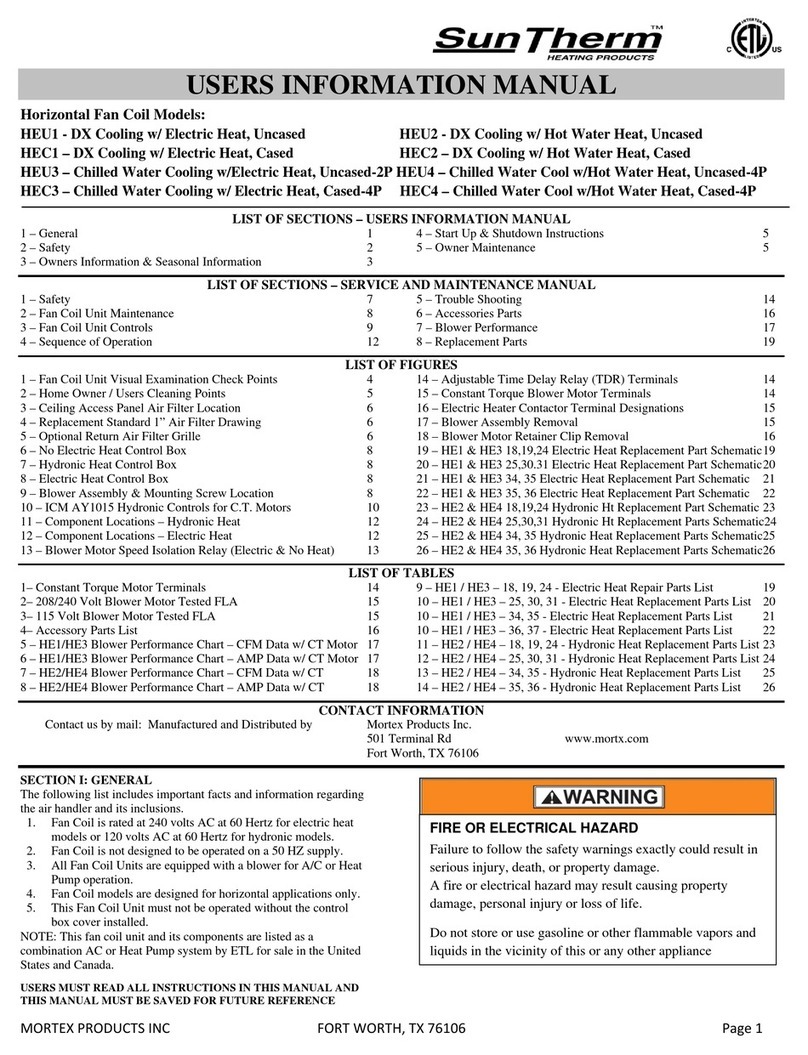
MORTEX
MORTEX Suntherm HEU1 User's information manual

miseno
miseno 7775693 Installation and operation instruction

Ruck Ventilatoren
Ruck Ventilatoren DVA EC 30 Series Assembly instruction
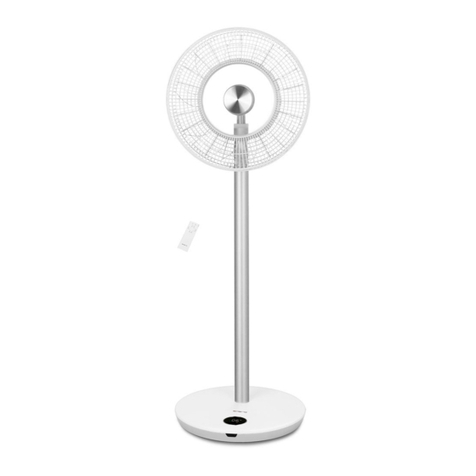
emerio
emerio FN-214468.1 instruction manual
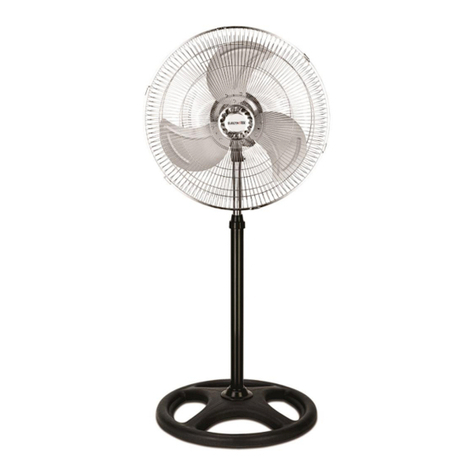
ELECTROTEK
ELECTROTEK ET-F18SF instruction manual

REMKO
REMKO RAV 30 Operation,technology,spare parts
